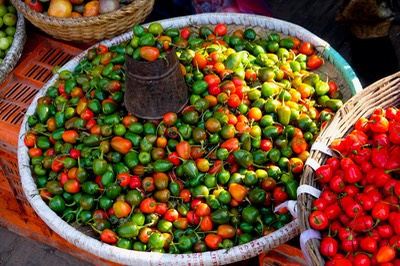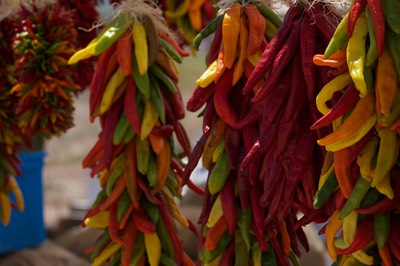
There are many people who insist that the most frequent question in New Mexico (USA) is “Red or Green?” Those of us in the know realize that there are three possible responses - the third being “Christmas” - meaning both red and green. The question and the response refer to the sauce which you would like on your meal. Do you want a red salsa or a green salsa?
Latin American markets often have a large number of chili varieties and chili preparations available for sale.
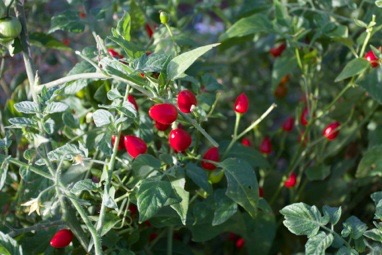

As shown in the photograph immediately above, there are many kinds of chili.
The Scoville Scale is used to measure the pungency (the amount of “hot”) that a chili has. The green chilies in the picture at the top are serranos which are rated at from 10,000 to 23,000 on the Scoville scale. When they are left on the bush they turn red, as will most chilies, photo below.
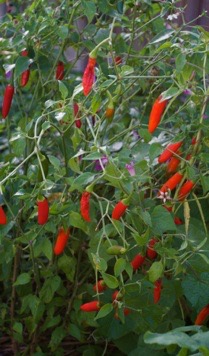
The small red chilies pictured above, both picked and on the bush, are chiltepins which are rated at from 50,000 to 100,000. Anything hotter than the serranos is uncomfortable for me. The scale currently tops out at a rating of 2,200,000 for the Carolina Reaper. (Bell Peppers are rate at 0.) The various chili varieties contain different chemicals (and differing amounts of those chemicals) - thus the difference in the amount of spiciness that humans detect.
The methods used to prepare chilies varies significantly. Prepared chilies are used in food preparation in ways that range from being a major component (example: chile relleno) to simply a spicy seasoning. Note, however, that even with a “standard” dish like Chile relleno the dish varies significantly between countries - both the chilies used in preparing the dish and the stuffing placed inside the dish vary greatly.
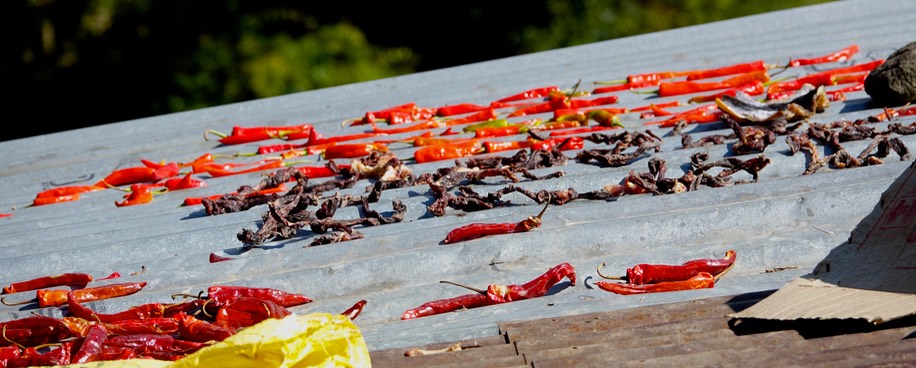
Drying Chilis - Bhutan
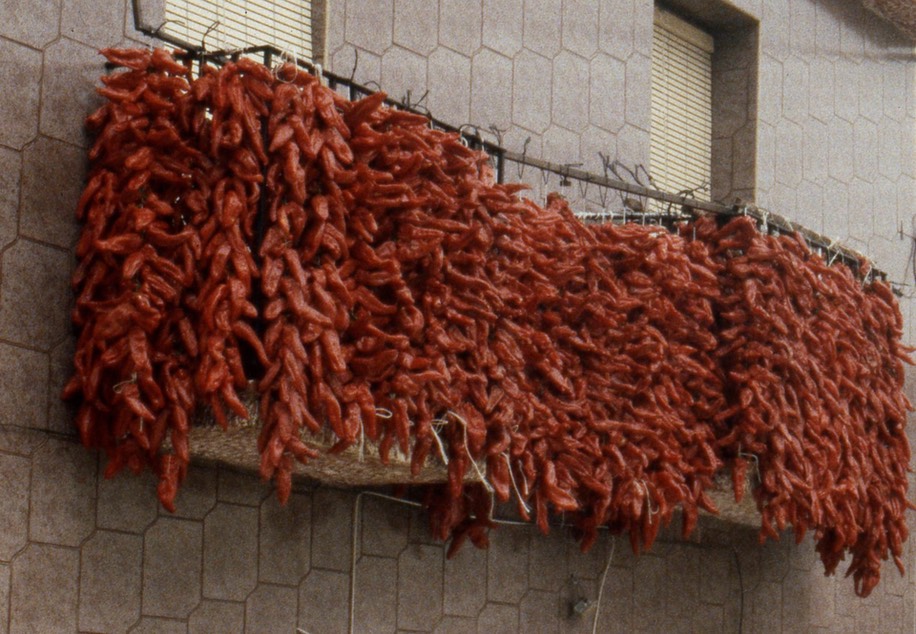
Gaudix, Spain

